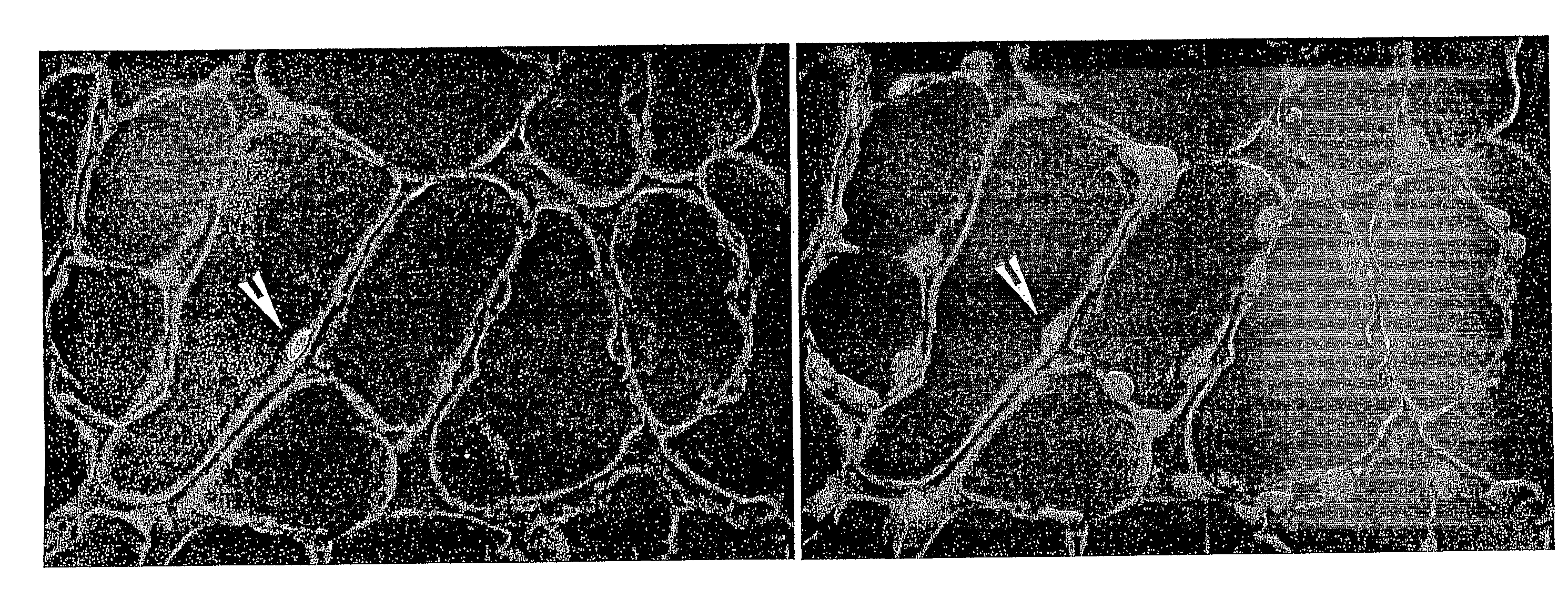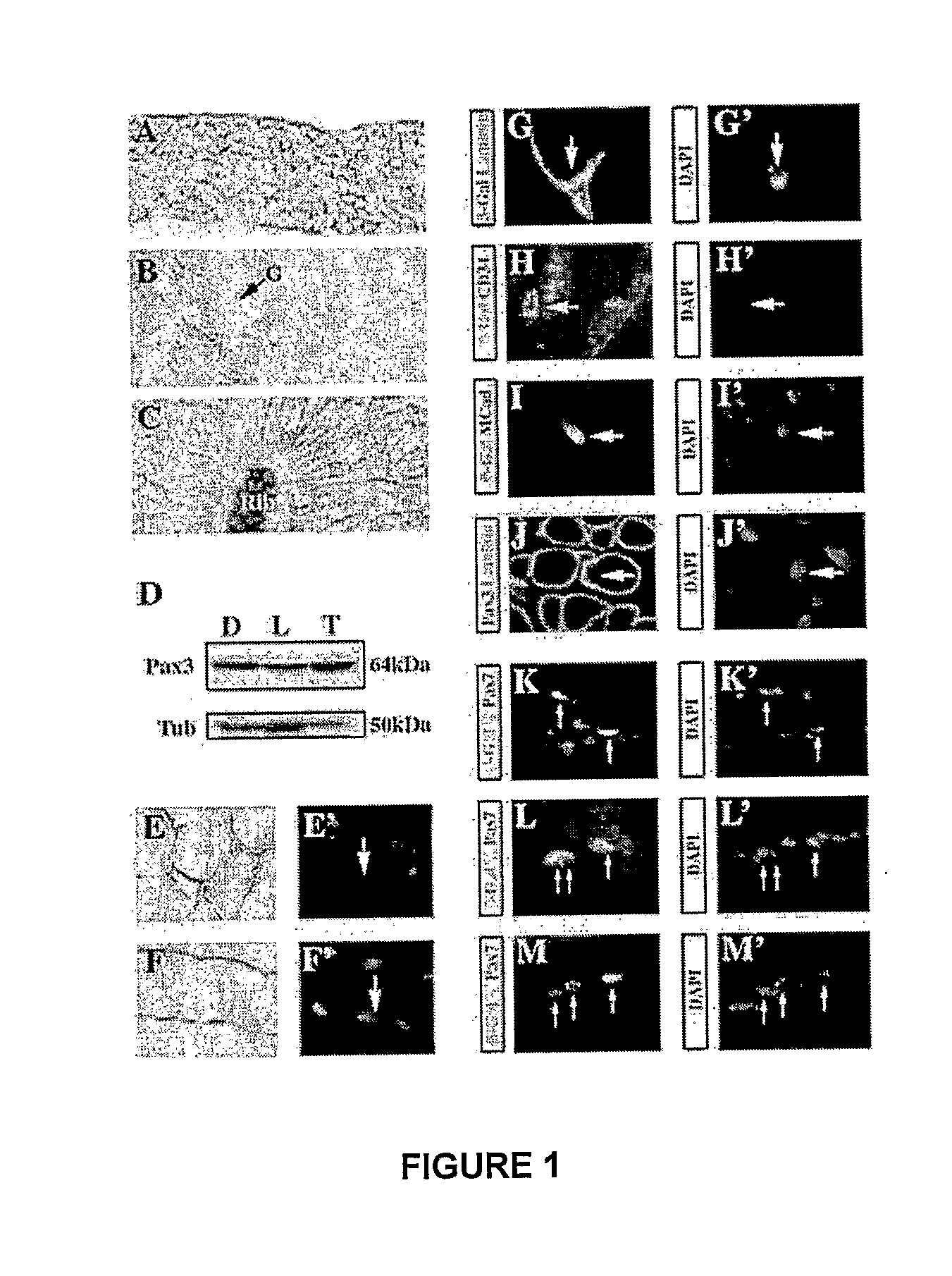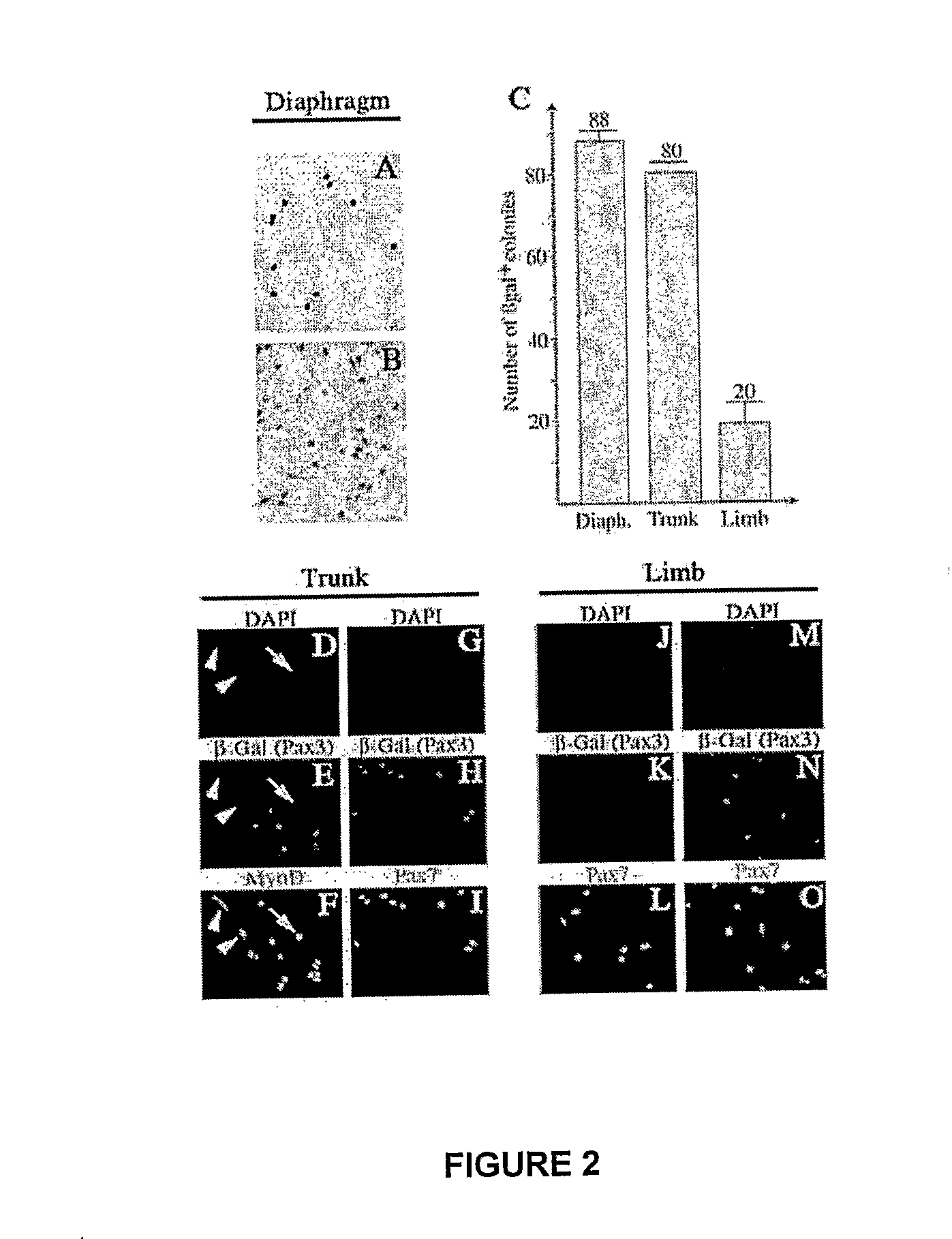Isolated Muscle Satellite Cells, Use Thereof in Muscle Tissue Repair and Method for Isolating Said Muscle Satellite Cells
a satellite cell and muscle technology, applied in the field of tissue engineering, can solve the problems of preventing the use of cell based tissue repair assays, unable to obtain unequivocal isolation, and insufficiently isolated pure populations of satellite cells, and achieves the effects of small size, low cellular granularity, and small siz
- Summary
- Abstract
- Description
- Claims
- Application Information
AI Technical Summary
Benefits of technology
Problems solved by technology
Method used
Image
Examples
example 1
Process for Obtaining a Preparation of Satellite Muscle Cells and Its Use for Skeletal Muscle Cell Therapy
[0083] After establishing that satellite muscle cells express the Pax3 gene (see also Example 3), the inventors undertook to isolate the muscle cells of the Pax3+ / GFP cell line based on the expression of the autofluorescent protein GFP (Green Fluorescent Protein) by FACS. The results from this analysis are presented in FIG. 10. After enzymatic dissociation of adult Pax3+ / GFP mouse diaphragms, the cellular suspension obtained was analyzed by FACS. A population of fluorescent cells was identified; it was localized in gate R2 (FIG. 10A). The analysis of these cells by Forward Scatter and Side Scatter, providing the inventors with information on the size and on the morphology of the cells, indicated that these fluorescent cells formed a homogeneous population of small sized cells localized in gate R1 (FIG. 10A).
[0084] The analysis of these cells after incubation with a CD34 surfac...
example 2
Functionality of Satellite Muscle Cells Isolated by this Process
Restoration of Dystrophin Expression
[0089] The functionality of the satellite muscle cells that have been isolated by the method of the invention was evaluated in vivo following injection in the muscles of mdx, nude mice. The mice from the mdx line lack dystrophin, a protein of the mature muscular fibre. This mdx line was crossed with nude mice in order to attenuate the cell graft rejection phenomena. The results from the GFP+ cell grafts in the anterior tibialis muscle of these mice, immediately following their isolation by FACS, are presented in FIG. 12 and Table I.
TABLE IRestoration of Dystrophin ExpressionNumber of fibersNumber of cells injectedNumber of micepositive for dystrophin20 0004587 ± 165 1 0005160 ± 74 020
Six (6) cells are sufficient to restore the expression of dystrophin in a fibre.
[0090] These results indicate that a relatively small number of cells, a few thousands, is sufficient to restore d...
example 3
Pax7 is Required for Survival of Adult Muscle Satellite Cells, whereas Its Myogenic Function in Controlling MyoD is Shared with Pax3, Expressed in a Subset of Muscle
[0103] Pax7 and Pax3 share the capacity to control MyoD in adult muscle satellite cells whereas Pax7 is required for survival a function for which Pax3 does not compensate despite co-expression in a subset of muscles.
PUM
| Property | Measurement | Unit |
|---|---|---|
| molecular weight | aaaaa | aaaaa |
| size | aaaaa | aaaaa |
| fluorescence activated cell sorter | aaaaa | aaaaa |
Abstract
Description
Claims
Application Information
 Login to View More
Login to View More - R&D
- Intellectual Property
- Life Sciences
- Materials
- Tech Scout
- Unparalleled Data Quality
- Higher Quality Content
- 60% Fewer Hallucinations
Browse by: Latest US Patents, China's latest patents, Technical Efficacy Thesaurus, Application Domain, Technology Topic, Popular Technical Reports.
© 2025 PatSnap. All rights reserved.Legal|Privacy policy|Modern Slavery Act Transparency Statement|Sitemap|About US| Contact US: help@patsnap.com



